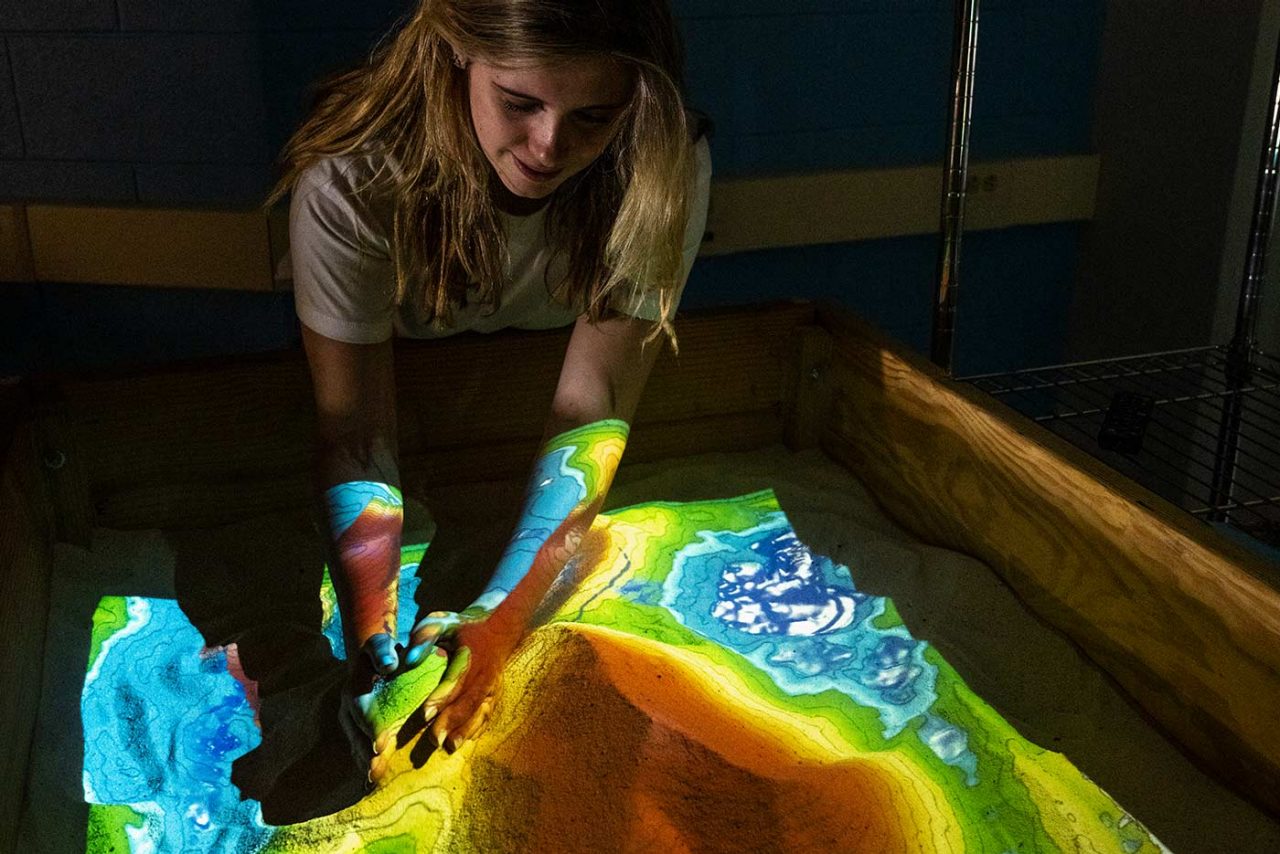Digging In
Augmented reality sandboxes bring environmental forces to life in the classroom
By Yasmine Iqbal

In her Geography of Earth’s Environments class, Tenley Ransom ’25 CLAS studied how mountains, valleys and other landforms change under the combined pressure of water, wind and other forces. But the concepts really clicked for Tenley, a double major in Environmental Science and Geography, when she was able to watch these changes in real time—thanks to a new interactive educational tool that merges hands-on learning with digital effects.
“I can show students all the pictures in the world to try to illustrate how the Grand Canyon came to be, but when I take them to the sandbox, they can see in real time how these types of forces change the landscape,” says Stephen Strader, PhD, associate professor of Geography and the Environment. Since Villanova acquired its first augmented reality (AR) sandbox last year, Dr. Strader and several other professors in both the College of Liberal Arts and Sciences and the College of Engineering have already used it as a teaching tool in multiple classes. “The AR sandbox allows students to connect the physical with the theoretical, much better than pictures or computer simulations,” Dr. Strader says.
The AR sandbox uses a 3D motion-sensing camera, a digital projector, and powerful simulation and visualization software to transform an actual playground-style sandbox into a highly sophisticated learning tool. As students shape the sand with their hands, the camera detects the changes and the digital projector applies topographic lines and colors to create an accurate 3D topographic model that can be augmented in real-time. The sandbox also allows students to study water flow and other hydrological processes.
“ The augmented reality sandbox allows students to connect the physical with the theoretical, much better than pictures or computer simulations. ”
- Stephen Strader, PhD
Last year, the National Science Foundation awarded Frank Klassner, PhD, professor of Computing Sciences, a three-year grant to enhance the software and hardware of the sandbox, which was first developed by researchers at the University of California, Davis. “We want to be able to allow for quantitative modeling: for example, specifying the rainfall rate, varying the permeability of the soil and altering the scale of the sandbox,” explains Dr. Klassner. “We’ll also be studying how augmented reality and virtual reality impact students’ learning styles and if these tools help them better understand and retain material.”
As part of the NSF project, Dr. Klassner is working with an interdisciplinary group of researchers at Villanova, including Lisa Marco-Bujosa, PhD, assistant professor of Education; Kabindra Shakya, PhD, associate professor of Geography and the Environment; and Virginia Smith, PhD, associate professor of Civil and Environmental Engineering. They are hoping to install four or five additional AR sandboxes across labs on campus at Villanova.
The work they’re doing will increase the technology’s capabilities and its applications in various disciplines. “In civil engineering, for example, we often think about how infrastructure and the environment interact,” Dr. Smith says. “The software and hardware enhancements to the sandbox will provide the ability to better illustrate how changes to a landscape can impact engineering design.”
NEXT IN NOVA-WORTHY
In Celebration of St. Augustine
A newly commissioned portrait celebrates the cultural heritage of one of the most influential thinkers in Church history